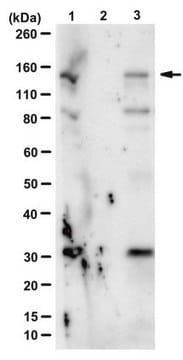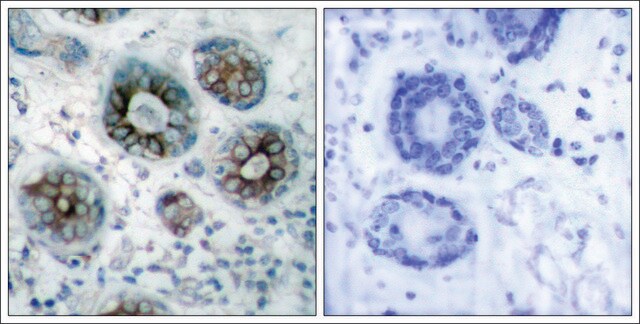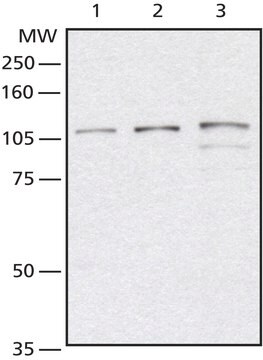05-1076
Anti-c-Jun Antibody, clone 6E4.4
clone 6E4.4, from mouse
Synonyme(s) :
JNK1 alpha protein kinase, JNK1 beta protein kinase, JUN N-terminal kinase, Stress-activated protein kinase JNK1, c-Jun N-terminal kinase 1, mitogen-activated protein kinase 8, mitogen-activated protein kinase 8 isoform JNK1 alpha1, mitogen-activated pro
Sélectionner une taille de conditionnement
Sélectionner une taille de conditionnement
About This Item
Produits recommandés
Source biologique
mouse
Niveau de qualité
Forme d'anticorps
purified immunoglobulin
Type de produit anticorps
primary antibodies
Clone
6E4.4, monoclonal
Espèces réactives
mouse, human, rat
Conditionnement
antibody small pack of 25 μg
Technique(s)
immunocytochemistry: suitable
western blot: suitable
Isotype
IgG1κ
Numéro d'accès NCBI
Numéro d'accès UniProt
Conditions d'expédition
ambient
Modification post-traductionnelle de la cible
unmodified
Informations sur le gène
human ... JUN(3725)
mouse ... Jun(16476)
rat ... Jun(24516)
Description générale
Spécificité
Immunogène
Application
Epigenetics & Nuclear Function
Transcription Factors
Immunocytochemistry Analysis: Confocal fluorescent analysis of HeLa, C2C12, and A431 cells using anti-c-Jun, clone 6E4.4 mouse monoclonal antibody (see page 2).
Qualité
Western Blot Analysis: 0.5-2 µg/mL of this antibody detected c-Jun on 15 µg of NIH/3T3 cell lysate.
Description de la cible
Multiple bands may be visible, indicating various phosphorylation states.
Liaison
Forme physique
Stockage et stabilité
Remarque sur l'analyse
NIH/3T3 cell lysate
Autres remarques
Clause de non-responsabilité
Vous ne trouvez pas le bon produit ?
Essayez notre Outil de sélection de produits.
Code de la classe de stockage
12 - Non Combustible Liquids
Classe de danger pour l'eau (WGK)
WGK 1
Point d'éclair (°F)
Not applicable
Point d'éclair (°C)
Not applicable
Certificats d'analyse (COA)
Recherchez un Certificats d'analyse (COA) en saisissant le numéro de lot du produit. Les numéros de lot figurent sur l'étiquette du produit après les mots "Lot" ou "Batch".
Déjà en possession de ce produit ?
Retrouvez la documentation relative aux produits que vous avez récemment achetés dans la Bibliothèque de documents.
Active Filters
Notre équipe de scientifiques dispose d'une expérience dans tous les secteurs de la recherche, notamment en sciences de la vie, science des matériaux, synthèse chimique, chromatographie, analyse et dans de nombreux autres domaines..
Contacter notre Service technique








